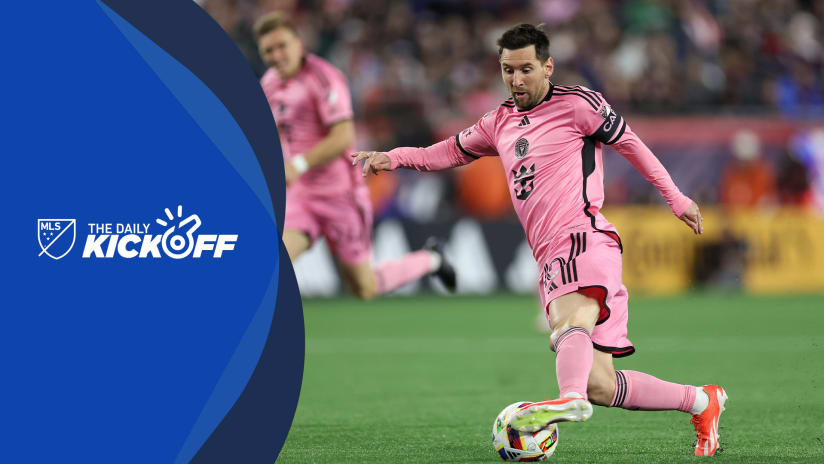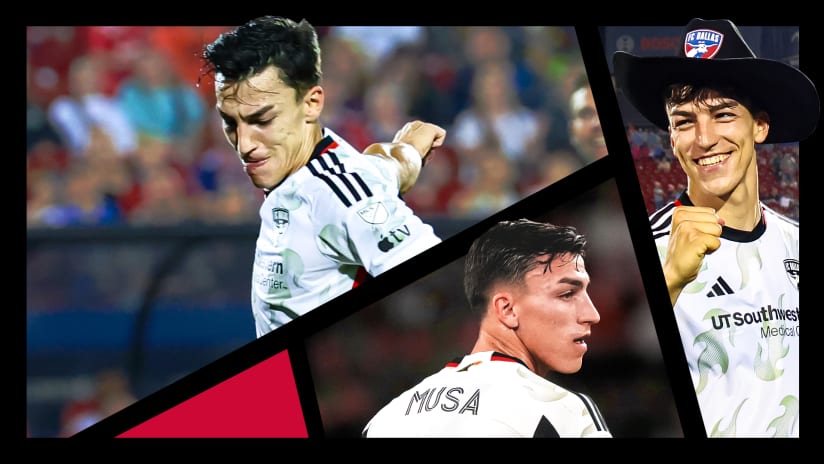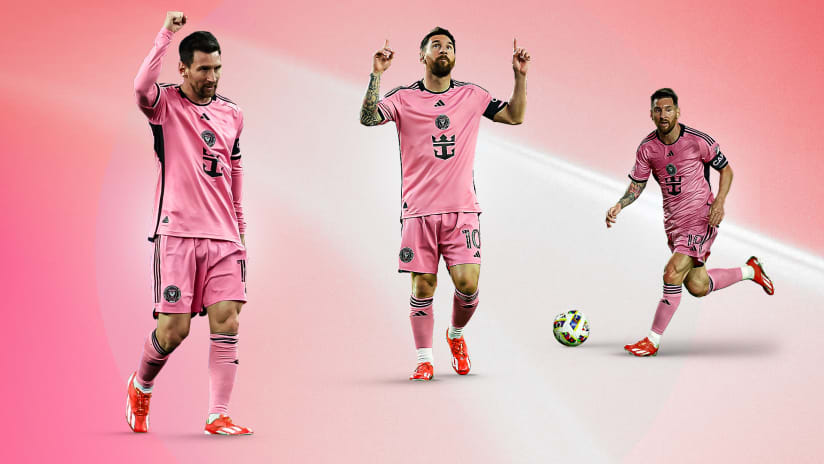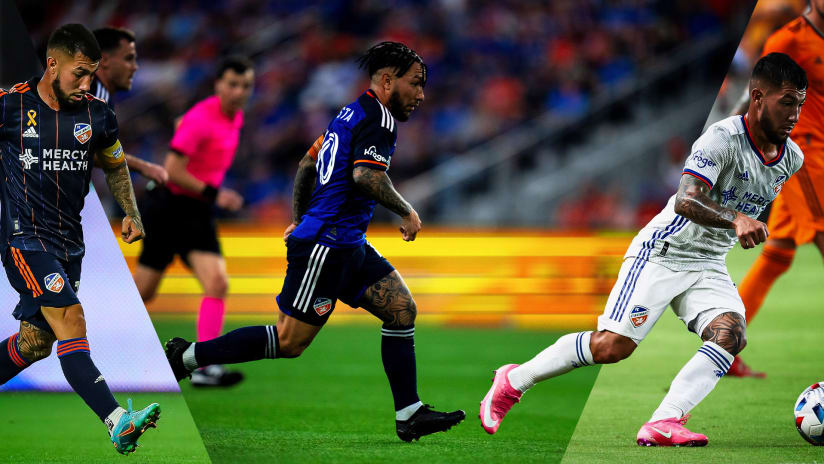sitting in coach, mind you -- counts the same in the standings as an ESPN game on a crisp Saturday afternoon in late September.
This is the time of the year when depth is so key, as is the overall state of your team's psyche. If the players weren't getting along behind closed doors in late April or early May, then they certainly won't be staging a love-in when fatigue has set in during July.
The great teams that MLS has seen over the years -- D.C. United's juggernauts in the '90s, Los Angeles in 2002 and maybe one of the two Landon Donovan-led San Jose teams (pick your poison, guys) -- find a way to win games at all times during the year.
But it is interesting when you examine the schedule in fragments. In fact, if you break the typical season up into parts, it looks a little something like this:
April-middle of May: Early-season madness. Every team is raring to get out of the gate strong and put some points on the board. Energy is at a maximum and morale is high -- even for the teams that know, deep down, that they will not be playing in the MLS Cup Final come November.
Example of greatness: New England in 2005. Led by Clint Dempsey's hot start in his sophomore campaign and Taylor Twellman's goal scoring during what would be an MVP season for the star striker, the Revs went 6-0-1 through May 14 to grab a stranglehold on first place in the Eastern Conference.
Middle of May-middle of July: Moving time. Here's where the cream rises to the top and others move the opposite way. During a World Cup year such as this one, it gets a little more frenzied because players are missing from most every club. Here's where the pretenders start to fall off the wagon a little bit.
Example of greatness: D.C. United just completed an 11-0-3 mark that spanned from May 13-July 15. That streak of brilliance has Peter Nowak's side sitting pretty in the East with a 20-point lead and a chance to clinch a playoff berth before the All-Star Game is even played. That's how you do it.
Middle of July-Early August: Dog Days. It all depends on how the schedule falls and when the All-Star Game is played. Because once the midseason classic arrives, the Dog Days are officially over. The players get a few days off to hit the beach, hang with the family, or just sit in a dark room in front of a high-def screen to watch anything but soccer. This portion of the schedule only lasts a few weeks, so it's important for teams to fight through the monotony and not let the sun and the fatigue deplete a roster. Here's where depth is particularly important.
When you look at the contribution that a rookie like Dominic Oduro has provided FC Dallas to go along with the addition of midfielder Marcelo Saragosa and goalkeeper Shaka Hislop during this time, the Western Conference leaders need to be commended on how their roster has been constructed.
Examples of greatness: San Jose reeling off three victories in a row in 2003 between July 19 and Aug. 8. It accomplished this feat despite playing only one of those matches at home and without Landon Donovan for two matches due to CONCACAF Gold Cup duty.
Early August-early September: U.S. Open Cup time. Here's where, for the most part, your team is basically playing a Saturday-Wednesday-Saturday schedule. The fourth round and quarterfinals of the nation's oldest soccer tournament has teams flying all over the place, whether it's out to the terror dome that is Paetec Park in Rochester, N.Y., the intimate grounds of Lusitano Stadium in Ludlow, Mass., or to lovable Blackbaud Stadium in Charleston, S.C.
Reaching the semifinals of the U.S. Open Cup is a double-edged sword, really, as it means your side is getting closer to playing for a cup, yet it also means that three or four extra matches had to be played over the course of six weeks to get it done. That could very well hurt a team down the line.
Examples of greatness: Los Angeles Galaxy in 2002 not only won eight of 10 regular season games after the All-Star Game in late July, but also took care of business in the U.S. Open Cup with victories against San Jose in the quarterfinals and Dallas in the semis. This strong show of form only buoyed Sigi Schmid's side to bigger and better things, as they went on to hoist their first MLS Cup later that October.
Early September-end of the regular season: The stretch run. Here's where time starts slipping away on a few teams, while others are simply worried about their position in the bracket come playoff time. The last couple of seasons have been full of intrigue during this part of the fall, as playoff berths have been nabbed on the final day of the season on several occasions, including a thrilling situation in 2004 when New England needed to win its final match of the season at home against Chicago. By doing so, they knocked the Fire out of the postseason, as well, on a day that was full of drama (all three goals in NE's 2-1 victory were scored in a four-minute span in the second half).
In some cases, these late-season matches provide actual previews of upcoming playoff matches. Just think back to last year when San Jose easily beat L.A. 3-1 on the last day of the season, setting up a matchup in the Western Conference Semifinals. Of course, Donovan's two goals against his former team in the first leg helped lead the fourth-place Galaxy past the MLS Supporters' Shield winners en route to what would be the club's second MLS Cup title in November.
Examples of greatness: Columbus in 2004. The Greg Andrulis-coached side went 5-0-3 during this part of the season to not only extend what would be a league-record 18-game unbeaten streak, but also clinched the Supporters' Shield as well. Unfortunately for the Crew, the eye-opening results earned during the middle and latter portions of the season meant little after falling behind 1-0 to the Revolution in the first leg of their Eastern Conference semifinals series and ultimately getting bounced after failing to counter at home in the second leg.
By this count, we're currently looking at the third part of a five-part season. Consider these Dog Days as one elongated Hump Day. There will be at least one team that surges into the All-Star break with a surge of momentum, which will carry on through into the second half of the season, while there will be more than one club that will not be able to properly fix the problems which have been exposed during the summer.
Thus far, the Red Bulls (three consecutive Ws) seem to be on the right track for second-half brilliance, as does Los Angeles (undefeated in July under Frank Yallop). Soon enough, it'll be seen whether or not the coaching change in Kansas City or some of the adjustments that Sigi Schmid has made with the Crew as of late will take hold in the second half of the season. And, it must be said, each of the cellar-dwellars are less than 10 points out of the playoffs, as we speak. It should all make for an exciting fall.
Until then, find a way to get tickets to see Chelsea, Barcelona and Real Madrid next month, stay away from tunnels if you are anywhere near Boston, drink at least one Vitamin Water a day and find a place in the shade.
Enjoy the end of the Dog Days. July is a memory next week.
Marc Connolly is the managing editor of ussoccerplayers.com and regularly writes to MLSnet.com. Marc can be reached at marc@oakwoodsoccer.com. This story was not subject to the approval of Major League Soccer or its clubs.










